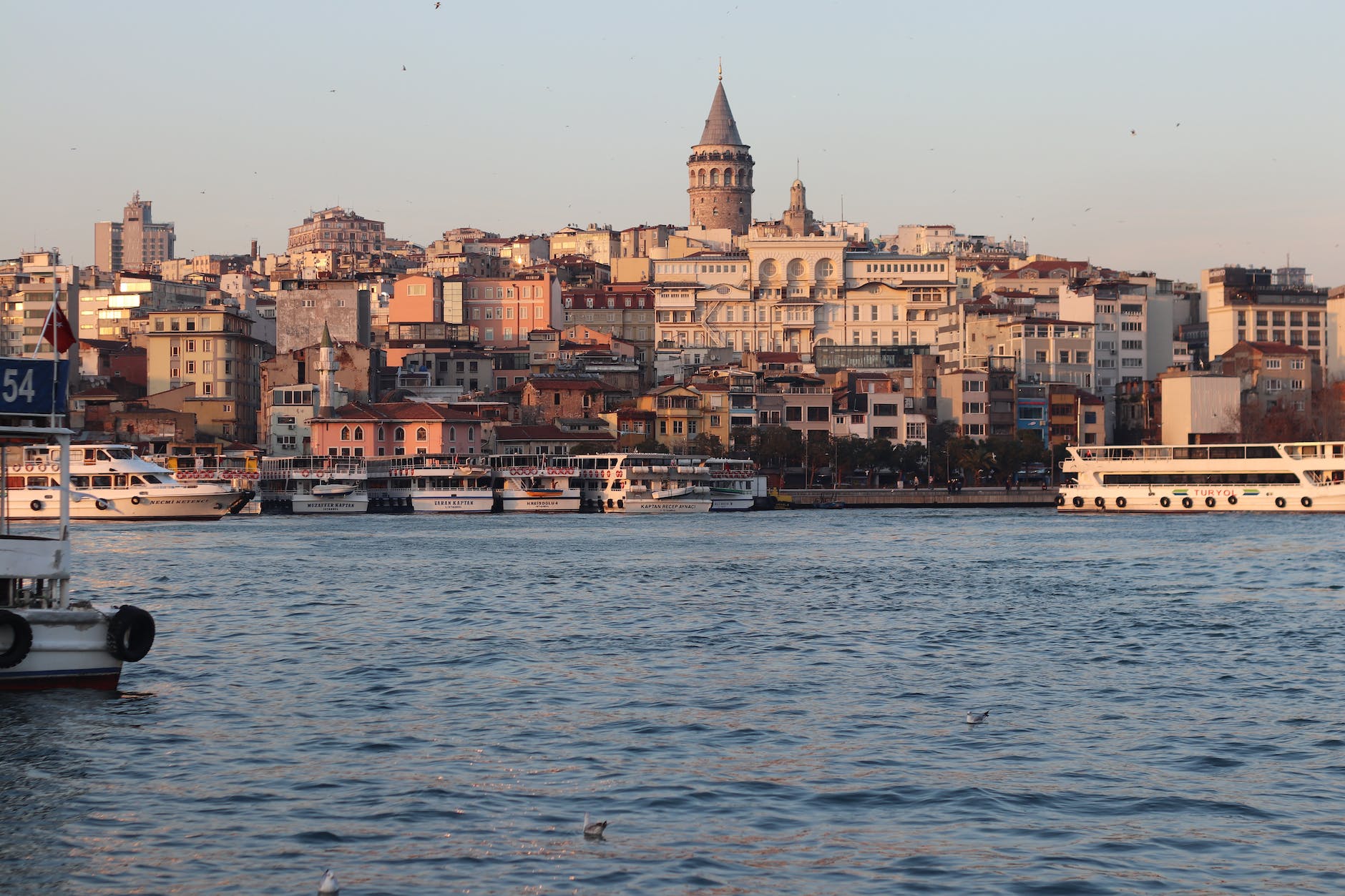Our journey through Turkey begins at the heart of Istanbul with the Topkapi Palace Museum, a testament to the opulence of the Ottoman Empire. This architectural marvel, once a royal residence, features lush gardens, magnificent courtyards, and chambers steeped in history. The Spoonmaker’s Diamond, an 86-carat gem, is among its treasures, symbolizing the immense wealth that once graced these halls.
Moving to the vibrant heart of Istanbul, the Galata Tower stands tall as a symbol of the city’s ever-evolving skyline. Constructed in the 14th century, it offers panoramic views of the bustling metropolis and the serene waters of the Golden Horn. In southeastern Turkey, Mount Nemrut, famed for its archaeological site and colossal statues, tells a tale of ancient grandeur. Massive stone heads representing gods and kings, some reaching 30 feet in height, create an otherworldly experience for history and nature enthusiasts.
The Grand Bazaar, a shopping paradise in Istanbul, dates back to the 15th century. It offers vibrant textiles, intricate carpets, exquisite jewelry, and unique souvenirs. Traveling to Trabzon, the Sumela Monastery, founded in the 4th century, perches on cliffs overlooking a scenic gorge. Its rock-cut chapels, main church, library, and ornate decorations provide a tranquil and awe-inspiring experience.
Join us as we unlock the treasures of Turkey’s historical tapestry, unveiling stories that have endured the test of time.
1. Topkapi Palace
Our journey begins at the heart of Istanbul, where the Topkapi Palace Museum reigns as a living testament to the opulence of the Ottoman Empire. Once the residence of sultans, this breathtaking complex stands as a true marvel of architecture and history. Its magnificent courtyards, lush gardens, and awe-inspiring chambers have witnessed the rise and fall of empires. The palace houses an extensive collection of artifacts, including exquisite jewelry, intricate weaponry, and timeless manuscripts. The most famous exhibit, the Spoonmaker’s Diamond, weighs an astonishing 86 carats and is a dazzling symbol of the wealth that once flowed through these hallowed halls.
2. Galata Tower
Moving to the vibrant heart of Istanbul, the Galata Tower stands tall, an emblem of the city’s ever-evolving skyline. This cylindrical stone tower was constructed in the 14th century, offering breathtaking panoramic views of the bustling metropolis and the serene waters of the Golden Horn. Over the centuries, the Galata Tower has played various roles, from an astronomical observatory to a fire lookout point. Today, it stands as an iconic symbol of Istanbul, a place where locals and tourists alike gather to savor the city’s magnificent skyline.
3. Mount Nemrut
Located in southeastern Turkey, Mount Nemrut is famous for its striking archaeological site and colossal statues. Built by King Antiochus I Theos of Commagene around 62 BC, this site features massive stone heads representing gods and kings. The statues, some reaching 30 feet in height, were originally part of a grand mausoleum. Today, the mountain offers an otherworldly setting where visitors can witness a surreal sunrise or sunset amidst the ancient ruins, creating an unforgettable experience for history and nature enthusiasts alike. Mount Nemrut is a UNESCO World Heritage Site and a symbol of Turkey’s rich historical heritage.
4. Grand Bazaar
The Grand Bazaar, situated in Istanbul, is one of the world’s most iconic and oldest covered markets, dating back to the 15th century. This sprawling labyrinth of over 60 streets and thousands of shops is a shopaholic’s paradise, featuring a vast array of goods. From vibrant textiles and intricate carpets to exquisite jewelry and unique souvenirs, it’s a treasure trove of Turkish craftsmanship. The market’s historic architecture and bustling atmosphere provide a cultural experience in itself. Whether you’re shopping for gifts, haggling for bargains, or simply immersing yourself in the local culture, the Grand Bazaar is a must-visit destination in Istanbul.
5. Sumela Monastery
Sumela Monastery is a remarkable and historically significant site perched on the cliffs of the Altındere Valley in Trabzon, Turkey. Founded in the 4th century, this Greek Orthodox monastery is renowned for its stunning location, nestled within lush greenery and overlooking a scenic gorge. The complex features a series of rock-cut chapels, a main church, a library, and various chambers. The intricate frescoes and ornate decorations within the monastery offer a glimpse into the region’s rich religious and cultural history. Sumela Monastery is a popular destination for tourists and history enthusiasts seeking a tranquil and awe-inspiring experience.
6. Hagia Sophia
Returning to Istanbul, we find the Hagia Sophia, a masterpiece of architectural ingenuity. Originally constructed as a cathedral in the 6th century, it later became a mosque during the Ottoman period. Today, it stands as a museum, blending elements of Christianity and Islam.
The Hagia Sophia’s immense dome and intricate mosaics are marvels of engineering and artistry. It has borne witness to the shift in power from the Byzantine Empire to the Ottoman Empire and is a symbol of Turkey’s cultural and religious diversity.
7. Pamukkale
Pamukkale, which translates to “cotton castle,” is a natural wonder and historical site rolled into one. The terraces of Pamukkale are formed by the flow of hot, calcium-rich mineral waters cascading down the mountainside. The result is a series of surreal, white travertine terraces that resemble a winter wonderland. Adjacent to Pamukkale is the ancient city of Hierapolis, which took advantage of the thermal waters for its baths and temples. Visitors can explore these well-preserved ruins and then soak in the thermal waters, just as ancient Romans did centuries ago.
8. Dolmabahçe Palace
Dolmabahçe Palace, situated along the European shores of the Bosphorus Strait in Istanbul, is a stunning masterpiece of Ottoman architecture. Built in the 19th century, it served as the primary administrative center for the Ottoman Empire during its final years. This opulent palace is renowned for its neoclassical and baroque influences, featuring a grand chandelier with 750 bulbs and magnificent halls adorned with intricate designs. The palace’s sprawling gardens and waterfront location make it a remarkable attraction. Its rich history and elegant interiors offer visitors a glimpse into the lavish lifestyle of the Ottoman sultans and their court.
Avid Writer with invaluable knowledge of Humanity!
Upcoming historian with over 30 million views online.
“You make your own life.”





